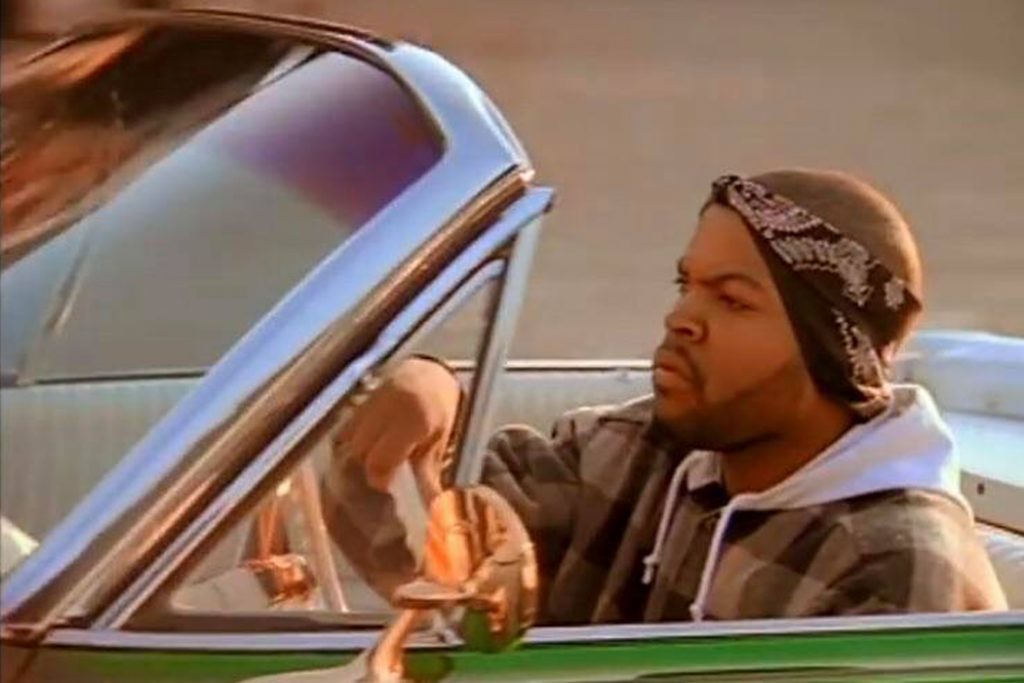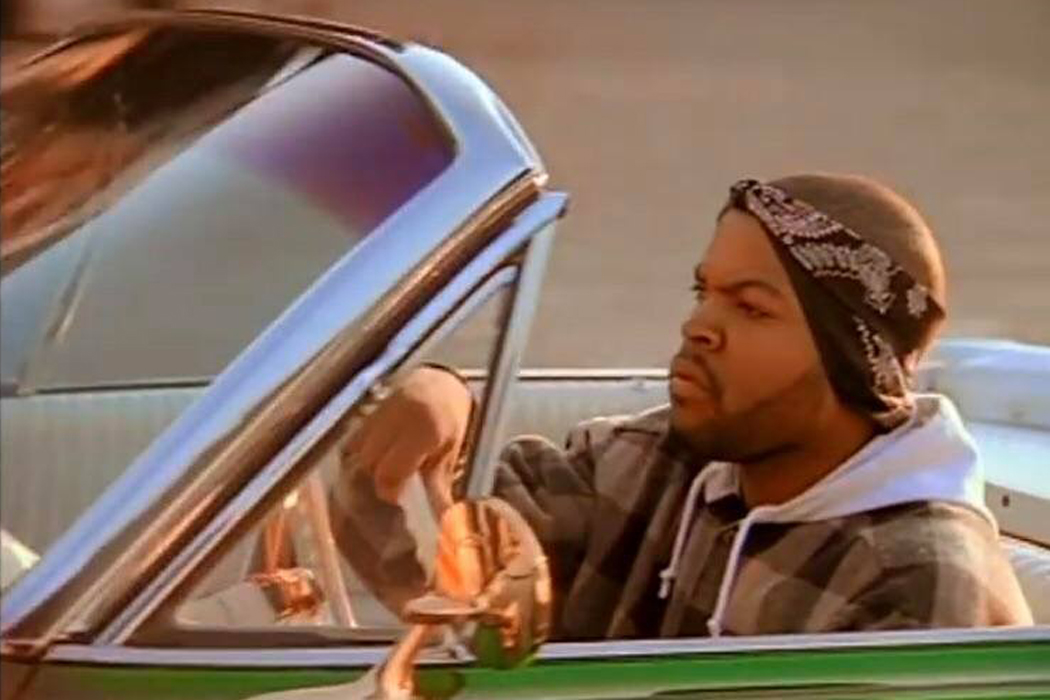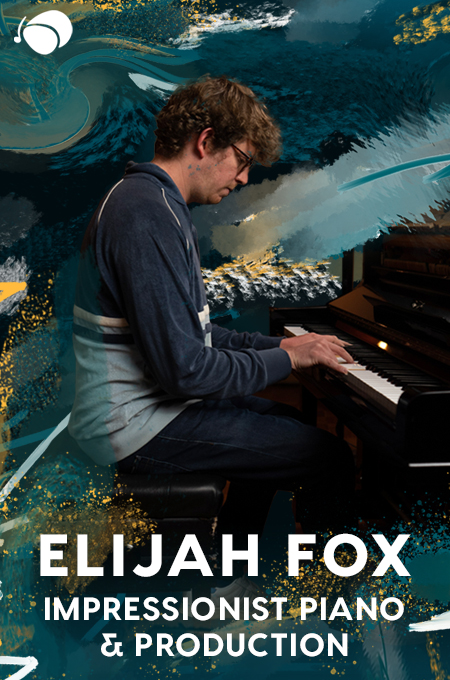+ The following is a lesson excerpted from Soundfly’s free Themes and Variation Companion Course, which extrapolates “themes” covered in our biweekly podcast of the same name. Listen and subscribe to the podcast here.
By Mahea Lee & Charles Burchell
Rap is a powerful art form. Composing verses is a practiced skill just like poetry and songwriting, and yet there are elements of the craft that are entirely unique and difficult to describe. Hip-hop is steeped in culture and history — a fact that should be treated with respect by anyone looking to create music in the genre.
In hip-hop, one can celebrate the unique magic that’s created when words and music combine to say something in a way that neither element could articulate entirely on its own. As listeners and consumers, we should dig deeper than catchy hooks, look beyond advisory labels, and open our ears to what’s being said beneath the surface.
That’s why we wanted to take a moment to appreciate the lyrical storytelling in Ice Cube’s classic “It Was a Good Day,” even though in Episode 2 our podcast, we mostly covered the song as a product of its sampling ingenuity. Upon first glance, the lyrics of “It Was a Good Day,” might strike some as shallow, and it may ring to others as “not safe for work.” Yet as guest panelist, Charles Burchell, points out during the episode, there’s a lot more to it than that.
While we won’t be dissecting things line by line — some of that’s already done in the podcast — but we strongly encourage you to give the song a listen with an ear toward the descriptive language, the references made, and the complex paradoxes addressed in the song’s underlying message. Instead, we’ll be extrapolating the notion of using lyrics as a vessel for sharing your experience and how to write lyrics that rhyme and resonate!
For now, here’s Ice Cube’s “It Was a Good Day.”
Sharing Your Experience Through Lyrics
Whether you’re an emcee or a singer-songwriter, lyric writing can be a great way to say something that matters to you. Of course, it isn’t always that simple. Here, we’ll address some common hurdles and share ideas to help you move past them.
1. It’s okay if it’s been said.
Thanks to the generations of artists, philosophers, and public speakers who came before us, life’s major points and plot lines have pretty much been covered. But that doesn’t mean you should avoid writing about them.
Everything may have been said, but not from your perspective. If something’s on your heart or mind, instead of worrying about how someone else approached it, ask yourself why it matters to you. How does that thing impact your life? What insights and experiences do you have to offer on the subject?
2. Everyone has something to say.
Great lyrics often find a balance between being relatable and offering a fresh take. You could be living the most ordinary life of all time, and there would still be aspects of your existence that were entirely unique to you and your experience. You’d still have memories and opinions that were your own and no one else’s.
Think of writing lyrics like storytelling. Sometimes the key plot points aren’t nearly as important as how the story’s told. What parts of your experience do you find meaningful or noteworthy? Which ones are kind of interesting or unique?
3. Paint a picture.
A good storyteller can make you feel like you’re living things firsthand. Through the words they use, they can put you right at the center of the action, leaving you hanging on their every word. A good lyricist will often do the same thing.
You may have heard the phrase “show, don’t tell,” and that basic strategy’s a good one for lyricists to keep in mind. Using descriptive language can really set the scene for a listener, drawing them in to what you have to say.
“It Was a Good Day” is full of detailed descriptions and specific references. Even if you can’t personally relate to every one of them, they help create a compelling listening experience.
If you’re writing about something from your own life, think back and spend some time recalling everything surrounding that situation. Think about sounds, smells, tastes, colors, textures… any descriptive details you can draw on and use to paint a picture with your words.
4. Understand your message.
Make sure you have an overall point. In addition to being the idea your listeners will hopefully walk away with, this can serve as something to weigh your words against.
If a line ever feels off, ask yourself how it relates to the song’s core message. Does it strengthen the point you’re making, or does it distract from it?
A Few Practical Lyric Generation Tools
Here’s a quick overview of some useful lyric writing tools:
Rhyme
Thanks to nursery books and poetry, you’re probably already pretty familiar with this concept. The basic idea is that words, lines, and syllables that end in similar sounds tend to pair nicely with one another: you and do, cat and hat, water and daughter, etc.
There are also variations on rhyming that you can incorporate to add interest to your lyrics.
Slant rhymes are rhymes that aren’t as exact as “moon” and “soon.”
moon / soon = rhyme
mood / soon = slant rhyme
Internal rhymes happen when words or syllables rhyme within a line. Here’s an example:
soon the moon will rise
to meet your starry eyes
In this case, we see the kind of rhyme we’re used to at the end of each line (“rise” and “eyes”), but we also have an internal rhyme because of “soon” and “moon,” and an internal slant rhyme in “meet” and “-ry.”
Alliteration
Alliteration happens when multiple words or syllables start with the same letter or sound in short succession. Tongue twisters like “she sells seashells down by the seashore” tend to be good examples. This can be a super handy and powerful device in hip-hop especially.
Stressed Syllables
When we speak, sing, or read, there are syllables we stress and syllables we don’t stress.
For example, when presented with the word “piano,” it’s pretty safe to say that most of us will emphasize that second syllable.
“pi-A-no” or “PI-a-NO”
Which sounds more natural?
While there are different degrees to this, simply being able to recognize whether a syllable is or isn’t stressed can help you establish patterns and set expectations for your listeners. It can also lay the groundwork for melody and rhythm.
Repeating and/or diverting from patterns of stressed and unstressed syllables can be a good way to give your lyrics some shape.
By the way, you can learn so much more about writing lyrics and music that accompanies your lyrics in Soundfly’s popular songwriting courses, The New Songwriter’s Workshop and Songwriting for Producers.
Lyric Writing Challenge
Write some honest and meaningful words.
You can use the track provided below to test your lyrical writing skills with a similar musical accompaniment to what Ice Cube was working with. Or, feel free to provide your own track, hip-hop or otherwise.
Go ahead and listen and download the track below to get started:
Download: Hip-Hop Track for Lyric Writing Exercise Download
If you’d prefer to go in more of a standalone poetry direction, you’re welcome to do this exercise without music.
No matter what, your task is to come up with at least four lines that reflect on your experience as a person.
Tips:
- Give yourself an overall message to work with. You don’t have to literally spell it out in your lyrics, but making sure you have a clear understanding of what you’re trying to say will help you come up with articulate lines that serve a purpose.
- Think about what makes your experience unique. Even if you’re writing about something that’s been addressed hundreds of times, an idea can become fresh simply because it’s filtered through your perspective.
- Explore your senses. Think about how you can immerse your listeners in an experience by “showing” rather than “telling.”
- Try playing around with some of those pattern-based tools as a way to incorporate some additional elements of poetry in your lines.
Next Step:
If you’re feeling inspired, keep going. Expand what you have and turn it into a full song, finished track, or epic poem.
Shout-out to our Head of Production, John Hull, for providing the above track. To learn how John makes some of the sounds he uses in his tracks, check out Advanced Synths and Patch Design for Producers.
Meet the Panelist

Charles Burchell is the Head Instructor of Soundfly’s The Art of Hip-Hop Production course. Charles has taught music for the past ten years and has worked with programs such as The Urbano Project, Carnegie Hall, Fondorie Sonore, Marquis Studios, Next Level Cultural Diplomacy Program, and Saint Louis College of Music. He is currently teaching hip-hop production, live performance, and rapping at Saint Louis College of Music and John Cabot University which are both located in Rome, Italy. He received a Bachelor’s in music from New England Conservatory and a Master’s in Arts in Education from the Harvard Graduate School of Education.
Burchell has recorded, produced, and performed with artists such as Omar Sosa, Yilain Canizares, Christian Scott, Braxton Cook, Talib Kweli, Ran Blake, Ciel Rouge, Jason Moran, and Iman Omari. He has also produced three records with his band, The Love Experiment.
Revisit Episode 2 of our podcast, Themes and Variation, in its entirety right here, or click over to Apple Podcasts, Spotify, Stitcher, or anywhere else you get your podcasts to subscribe.






